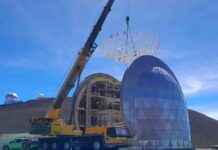China has always been known for its bustling cities like Beijing, Shanghai, Shenzhen, and Guangzhou. These cities have long been considered the top choices for graduates looking for job opportunities and a good quality of life. However, a shift is occurring as second-tier cities in China are starting to rise and challenge the dominance of these traditional powerhouse cities.
With nearly 12 million students graduating from Chinese universities each year, the destination choices for these graduates are becoming more diverse and unpredictable. In the past, the magnetism of Beijing, Shanghai, Shenzhen, and Guangzhou was undeniable due to their strong economies, better public services, and large populations ranging from 13 million to 26 million.
These cities were labeled as “first-tier” cities and attracted a large influx of people seeking opportunities. But now, the landscape is changing as second-tier cities in China are beginning to shine. These cities are experiencing growth in various sectors, offering new job opportunities, and providing a high quality of life for residents.
The rise of second-tier cities poses a threat to the dominance of Beijing and other first-tier cities. Graduates are now considering cities like Chengdu, Hangzhou, Wuhan, and Xi’an as viable options for their careers. These cities are becoming more attractive due to their vibrant economies, lower cost of living, and improving infrastructure.
In addition to job opportunities, second-tier cities are also focusing on enhancing their cultural and recreational offerings to attract young professionals. With a growing middle class and increasing urbanization, these cities are investing in arts, entertainment, and green spaces to create a more livable environment for residents.
As the competition between first-tier and second-tier cities heats up, Beijing and other traditional powerhouse cities will need to adapt to retain their top talent and economic status. This shift in the urban landscape of China reflects the country’s ongoing economic and social transformation, offering new possibilities and challenges for both residents and policymakers alike.



























